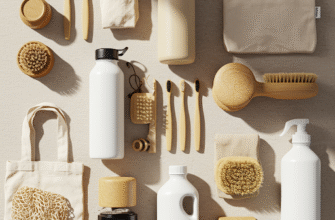In today’s fast-paced world, it’s easy to get caught up in the whirlwind of daily activities, often overlooking the simple joys and subtle details that surround us. Mindful observation, a practice rooted in mindfulness, offers a powerful antidote to this autopilot mode. It encourages us to intentionally focus our attention on the present moment, observing our surroundings and internal experiences without judgment. This seemingly simple act can have profound effects on our well-being, enhancing our awareness, reducing stress, and fostering a deeper appreciation for life.
What is Mindful Observation?
Mindful observation isn’t just about looking; it’s about seeing. It’s about engaging all of your senses to fully experience the present moment. It’s about noticing the details – the way the light filters through the leaves of a tree, the gentle hum of a refrigerator, the subtle scent of rain on the pavement. It’s about becoming a curious observer of your own thoughts and feelings without getting carried away by them. Think of it as stepping back and observing your life unfold like a movie, without feeling the need to rewrite the script.
The Core Principles
Several key principles underpin the practice of mindful observation:
- Present Moment Awareness: The focus is always on what’s happening right now, rather than dwelling on the past or worrying about the future.
- Non-Judgment: Observe without labeling, criticizing, or evaluating. Simply notice what is, without trying to change it.
- Acceptance: Acknowledge your thoughts, feelings, and sensations as they are, without resistance. Acceptance doesn’t mean approval; it means recognizing reality.
- Curiosity: Approach your observations with a sense of childlike wonder and open-mindedness. Be willing to see things with fresh eyes.
- Patience: Mindful observation takes practice. Be patient with yourself as you learn to quiet your mind and focus your attention.
Why Practice Mindful Observation?
The benefits of mindful observation extend far beyond simply becoming more aware of your surroundings. Regular practice can lead to significant improvements in various aspects of your life:
- Reduced Stress and Anxiety: By focusing on the present moment, you can break free from the cycle of worry and rumination that fuels stress and anxiety.
- Improved Focus and Concentration: Mindful observation trains your attention, making it easier to concentrate on tasks and resist distractions.
- Enhanced Emotional Regulation: By observing your emotions without judgment, you can gain a better understanding of them and develop healthier coping mechanisms.
- Increased Self-Awareness: Mindful observation allows you to become more attuned to your thoughts, feelings, and bodily sensations, leading to greater self-understanding.
- Greater Appreciation for Life: By noticing the beauty and wonder in the everyday, you can cultivate a deeper sense of gratitude and joy.
Research has shown that mindfulness practices, including mindful observation, can have a positive impact on mental health. Studies suggest that it can reduce symptoms of anxiety, depression, and chronic pain.
A Simple Mindful Observation Exercise
Here’s a step-by-step guide to a simple mindful observation exercise you can try anytime, anywhere:
- Find a Comfortable Spot: Sit comfortably in a chair or on the floor. You can close your eyes or keep them softly focused on a single point.
- Ground Yourself: Take a few deep breaths, noticing the sensation of the air entering and leaving your body. Feel your feet on the ground or your body supported by the chair.
- Choose Your Focus: Select something to observe. This could be your breath, a sound, a visual object, or a sensation in your body.
- Observe with Curiosity: Direct your attention to your chosen focus. Notice its qualities without judgment. For example, if you’re focusing on your breath, notice the rhythm, the temperature, and the sensation of movement. If you’re observing a sound, notice its pitch, volume, and duration.
- Acknowledge Distractions: As you observe, your mind will inevitably wander. When you notice your thoughts drifting, gently acknowledge them without judgment and redirect your attention back to your chosen focus. Don’t get frustrated with yourself; this is a natural part of the process.
- Continue for 5-10 Minutes: Set a timer for 5-10 minutes and continue to observe your chosen focus, gently redirecting your attention as needed.
- Reflect on Your Experience: After the exercise, take a few moments to reflect on your experience. What did you notice? How did you feel? Did you find it easy or difficult to stay focused?
Examples of What to Observe
The possibilities for mindful observation are endless. Here are a few ideas to get you started:
- Your Breath: Notice the sensation of the air entering and leaving your nostrils or the rise and fall of your chest.
- Sounds: Listen to the sounds around you – the chirping of birds, the hum of a computer, the rustling of leaves.
- Visual Objects: Choose an object, such as a flower, a painting, or a piece of fruit, and observe it in detail. Notice its color, shape, texture, and any other interesting features.
- Bodily Sensations: Pay attention to the sensations in your body – the feeling of your feet on the ground, the warmth of the sun on your skin, the tension in your shoulders.
- Your Thoughts: Observe your thoughts as they arise and pass away, without getting caught up in them. Notice their content, their tone, and their frequency.
- Your Emotions: Acknowledge and observe your emotions without judgment. Notice how they feel in your body and how they affect your thoughts and behavior.
Tips for Cultivating Mindful Observation
Making mindful observation a regular part of your life takes practice and patience. Here are some tips to help you cultivate this valuable skill:
- Start Small: Begin with just a few minutes of mindful observation each day and gradually increase the duration as you become more comfortable.
- Be Consistent: Try to practice mindful observation at the same time each day, even if it’s just for a few minutes. Consistency is key to developing a habit.
- Find a Quiet Space: Choose a quiet and comfortable space where you won’t be disturbed.
- Minimize Distractions: Turn off your phone, close your email, and let others know that you need some quiet time.
- Be Patient with Yourself: Don’t get discouraged if your mind wanders or if you find it difficult to focus. Mindful observation is a skill that takes time and practice to develop.
- Integrate Mindful Observation into Your Daily Life: Look for opportunities to practice mindful observation throughout the day. For example, you can practice mindful eating, mindful walking, or mindful listening.
- Use Guided Meditations: There are many guided meditations available online and through apps that can help you practice mindful observation.
If you’re struggling with significant anxiety, depression, or other mental health issues, mindful observation should be used as a complementary tool, not a replacement for professional treatment. It’s always best to consult with a qualified mental health professional.
Making it a Habit
The real power of mindful observation lies in integrating it into your daily life. It’s not just a practice to be confined to meditation sessions; it’s a way of being. Here are some ways to weave mindful observation into your everyday routine:
Mindful Eating
Instead of mindlessly shoveling food into your mouth, take a moment to appreciate your meal. Notice the colors, textures, and aromas of the food. Savor each bite, paying attention to the flavors and sensations in your mouth. Eat slowly and deliberately, putting down your fork between bites. Notice when you’re full and stop eating before you’re stuffed.
Mindful Walking
Pay attention to the sensation of your feet making contact with the ground. Notice the movement of your body as you walk. Observe the sights, sounds, and smells around you. Let go of any thoughts or worries and simply be present in the moment.
Mindful Listening
Give your full attention to the person who is speaking. Avoid interrupting or formulating your response while they’re talking. Listen with empathy and curiosity, trying to understand their perspective. Pay attention to their tone of voice, body language, and facial expressions.
Mindful Handwashing
Even a simple task like washing your hands can become an opportunity for mindful observation. Notice the temperature of the water, the sensation of the soap on your skin, and the sounds of the water flowing. Pay attention to each step of the process, from turning on the tap to drying your hands.
Troubleshooting Common Challenges
It’s perfectly normal to encounter challenges when you first start practicing mindful observation. Here are some common challenges and tips for overcoming them:
- Mind Wandering: The mind is naturally restless and prone to wandering. When you notice your thoughts drifting, gently redirect your attention back to your chosen focus without judgment. Think of it as training a muscle; the more you practice, the stronger your focus will become.
- Impatience: It can be frustrating when you’re trying to focus and your mind keeps racing. Remember that mindfulness is a practice, not a performance. Be patient with yourself and celebrate small victories.
- Judgment: It’s easy to fall into the trap of judging your thoughts, feelings, and sensations. Try to observe them with a sense of detachment and acceptance. Remember that you are not your thoughts or feelings; you are the observer of them.
- Boredom: Mindful observation can sometimes feel boring, especially when you’re focusing on something simple like your breath. If you find yourself getting bored, try changing your focus or adding a new element to your practice.
- Physical Discomfort: If you’re experiencing physical discomfort, such as back pain or stiffness, try adjusting your posture or taking a short break. It’s important to be comfortable so you can focus on your observation.
The Long-Term Benefits
The benefits of mindful observation accumulate over time. With consistent practice, you’ll find yourself becoming more present, more aware, and more compassionate. You’ll be better equipped to handle stress, regulate your emotions, and appreciate the beauty and wonder of the world around you. Mindful observation is a lifelong journey, not a destination. Embrace the process, be patient with yourself, and enjoy the ride.
Ultimately, mindful observation is about cultivating a deeper connection with yourself and the world around you. It’s about learning to be present in the moment and appreciating the simple joys of life. By practicing mindful observation regularly, you can transform your life in profound and meaningful ways.








